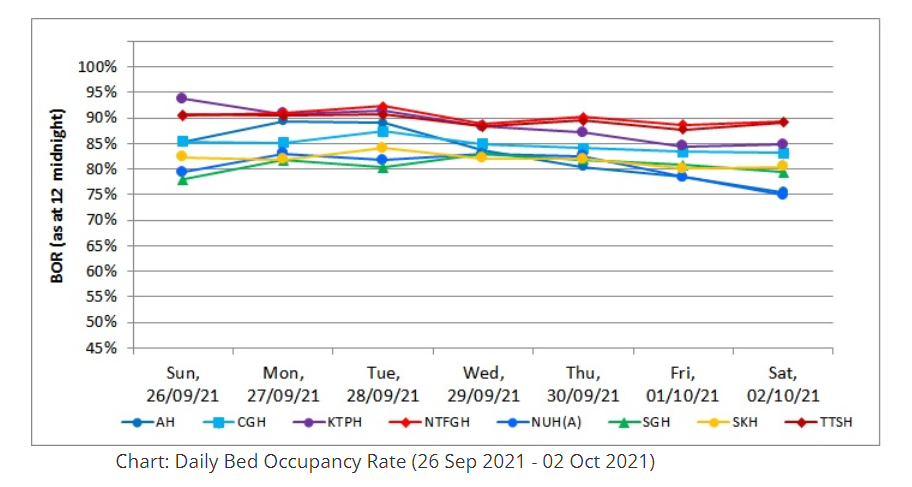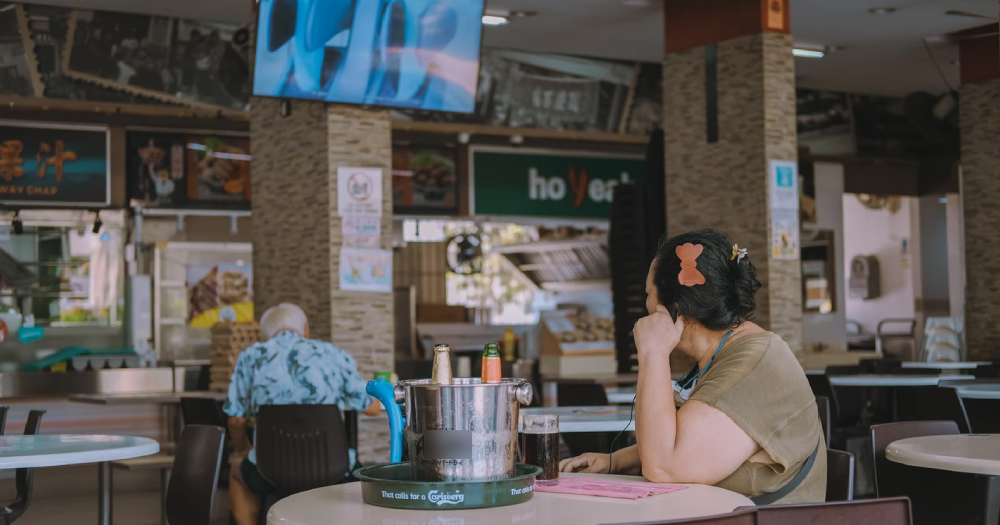"So today how many cases? Over 3,000 cases again? Wah, jialat.”
If you have heard or read this in some form at least once a day for the past few weeks, you’re not alone.
As of Oct. 5, Singapore has crossed the 3,000 daily cases mark, and may cross the 5,000 daily cases mark by mid-October, according to Multi-Ministry Task Force (MTF) co-chair Gan Kim Yong.
Healthcare capacity is also ramping up in preparation for a possible 10,000 cases, Health minister Ong Ye Kung said in Parliament on Oct. 4.
10,000 cases sounds like a whole lot, given that before this, Singapore has not had the experience of recording thousands of cases per day, let alone thousands of locally-transmitted cases within the community.
From 'Zero Covid' to endemic
In the first 18 months or so, Singaporeans have gotten used to the mindset that restrictions can and should be a natural response to high case numbers (especially locally-transmitted and unlinked).
Last year, the Circuit Breaker was implemented to reverse the wave of infections and bring cases down to a manageable number as local transmissions were on a significant rise. Phase 2 (Heightened Alert), which saw dine-in being prohibited and social gatherings capped at two, was also aimed at curbing community transmission.
The strategy then was 'Zero Covid', where low case numbers served as evidence that we were on the right track.
But this has changed. High case numbers will no longer be sufficient for tighter measures.
Now, Singapore has "gone beyond" relying on restrictions or lockdown as a means to bring down case numbers. Instead, MTF co-chair Lawrence Wong said that any stabilisation measures (such as the gathering cap of two) are to slow the rate of increase of transmission, and to ensure that our healthcare capacity can cope with any increase in cases.
During PM Lee's address on Saturday (Oct. 9), he spoke about the need to "update our mindsets" as the 'Zero Covid' strategy is no longer feasible for Singapore.
The implication is that given the delta variant, case numbers were expected to rise significantly, and will likely continue to increase in the near future – this is our new reality.
But he added: "We should respect Covid-19, but we must not be paralysed by fear."
Not just about case numbers in and of themselves
Previously, Wong had also urged Singaporeans to not "get too carried away" or get "too anxious or fearful" when looking at the case numbers — this is not to say that these case numbers are completely useless, but rather, they only form a portion of the picture.
In an article on Oct. 4, Straits Times health correspondent Salma Khalik questioned the meaningfulness of these daily numbers.
Since most cases are likely to be mild (98 per cent of reported cases had mild or no symptoms), what is a high case number really telling us?
The significance we should be assigning to daily case numbers is unclear in this endemic state, making it difficult for the everyday person to make sense of whether the situation is indeed worrying or not.
Salma argued in another article that the daily figures “do not paint the full picture but can still dampen spirits”, which can do more harm than good if one chooses to base their responses on an incomplete picture.
Influenza, for instance, kills two people a day (patients can die from an overwhelming immune response, secondary infection or multi-organ failure), but people are hardly panicking about these deaths, she explained.
What are some other indicators to watch out for?
Lawrence Wong has emphasised that the current Covid-19 management strategy is focused on ensuring that our healthcare system is able to cope with caring for Covid-19 patients who are seriously ill.
Covid-19 patients typically start with mild symptoms. However, a small proportion will deteriorate over the next few days to then require oxygen therapy or even intensive care.
Hence, daily case counts are useful for models that predict the demand on the health system in the days to come, Jeremy Lim, Associate Professor at the Saw Swee Hock School of Public Health, explained.
While statistics on health system utilisation due to Covid-19 are still "relevant", Lim thinks it is more useful to look at overall capacity.
Data shows that our hospital bed occupancy rate has been around 75 to 95 per cent in the previous week, depending on the hospital and date.

For every 5,000 new cases, PM Lee said that we could roughly expect around 100 (2 per cent) to become seriously ill.
While it can look "terribly worrying" to see the number of Covid-19 cases occupying hospital beds, Lim said that it can also be "reassuring" if there are still a good number of vacant beds to meet that demand.
According to a press release from the Ministry of Health (MOH) on Oct. 8, 20 per cent of hospital beds in acute and community public hospitals are taken up by Covid-19 patients, with occupancy of critically ill cases in intensive care at 23.5 per cent (as of Oct. 7).
The addition of Covid-19 Treatment Facilities (CTFs) islandwide will also provide some much-needed beds for patients who require care, with a projected total CTF capacity of 3,700 beds by the end of October.
Why daily case tracking still important, for now
Responding to a suggestion that case numbers should be publicised weekly instead of daily, a forum letter disagreed:
“As a citizen, I would like to receive timely and complete information from the Government, so that I can make my own decision about whether to go out or attend certain events based on my own assessment of my health, condition and risk.”
And as the daily cases continue to climb, the higher the chances of coming into contact with a Covid-19 patient (and receiving a HRW) or catching the virus — all these potentially posing disruptions to everyday life.
Knowing that there is a high number of cases also means that one can plan for these increased probabilities and the need for more frequent self-testing.
In Lim's view, daily case numbers are still important to report as this is the current practice internationally. However, he clarified that the definitions on daily cases should be applied consistently (i.e. whether they test positive on a PCR test and are symptomatic).
Currently, with Singapore's shift to simplify Covid-19 protocols, and a shift towards using ART test kits as the primary mode of testing, more cases will no longer be included in the official daily case count.
Given these developments, Director of Medical Services Kenneth Mak was asked during Saturday's press conference: Will MOH still be reporting the daily case count, and if not, how can we continue to have an accurate picture of Singapore's Covid-19 situation?
Daily cases will still be reported for now, Mak said. However, as time goes on, the hope is to progressively "focus on what is more important".
The authorities will also be looking at a "wider range of indicators" to better understand the prevalence of Covid-19 and how it's spreading, with a focus on cases which may end up requiring oxygen supplementation or treatment in intensive care.
So while there may come a time where daily case numbers are no longer one of the key pieces of information in the Covid-19 update, that's not going to be the case so soon.
What's next for Singapore?
It is important to remember that Singapore’s endemic Covid-19 future is still being charted.
But so far, what we know is that home recovery will continue to be the default model, and most Covid-19 patients should expect to recover at home rather than at healthcare facilities or hospitals.
It is possible that many of us will get infected at some point, infectious diseases specialist Dale Fisher told Mothership.
"In fact, there's nothing to be embarrassed about if you catch Covid[-19], because sooner or later, many of us will end up catching the virus,” Wong said in a MTF press conference on Oct. 2.
Moving forward, Singapore will likely need to shift away from relying on government guidance on what we're allowed or suggested to do.
From Monday (Oct. 11), revamped Covid-19 protocols — simplified to just three main processes — will kick in, marking Singapore's shift towards personal responsibility and self-management.
This means gradually moving away from the authorities' hands-on method of dealing with this pandemic, and into a phase where Singaporeans can make decisions more independently, based on their risk assessment and what they deem to be socially responsible.
Hopefully into better times too.
Top photo via Grace Ho/Unsplash.
If you like what you read, follow us on Facebook, Instagram, Twitter and Telegram to get the latest updates.
